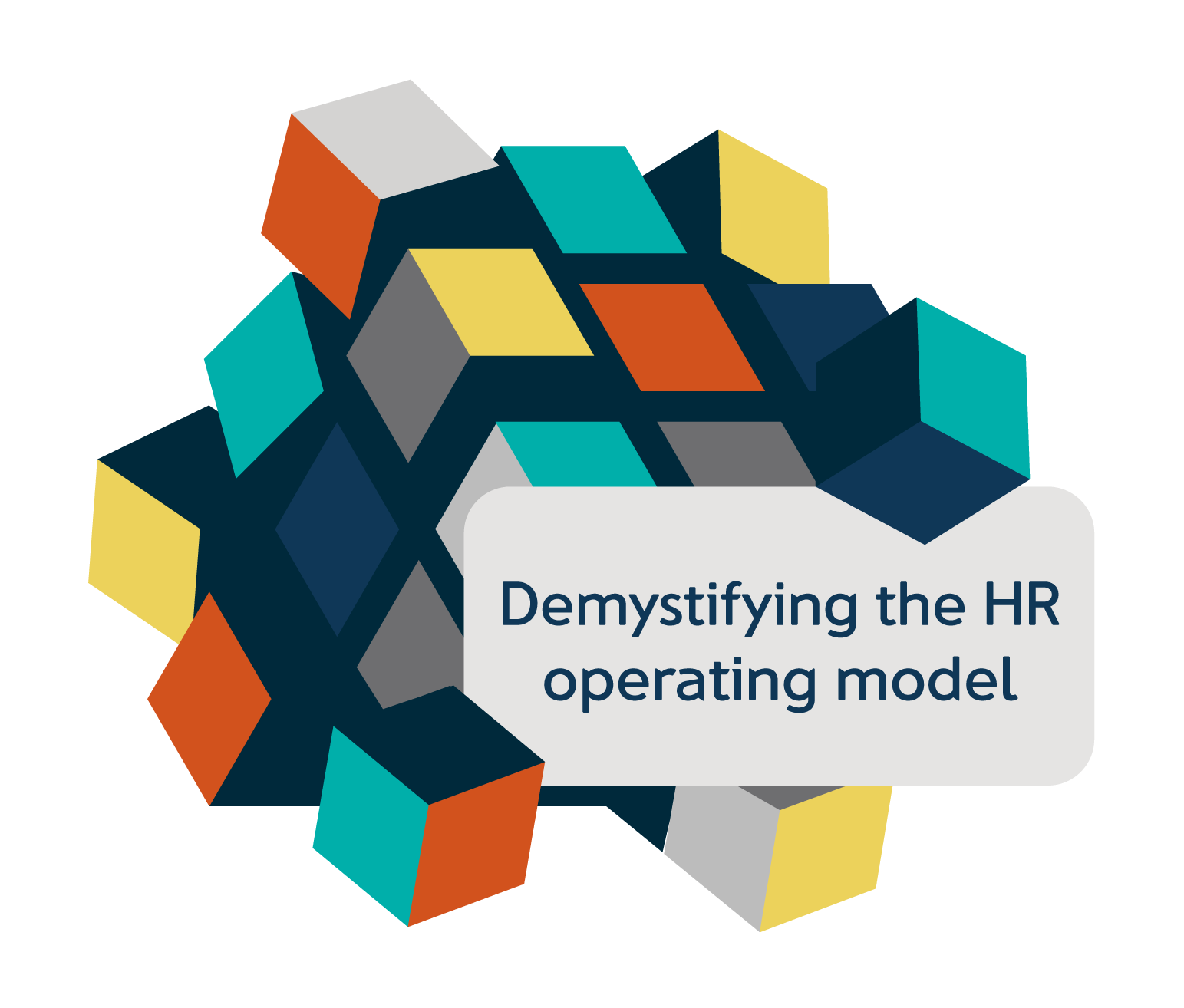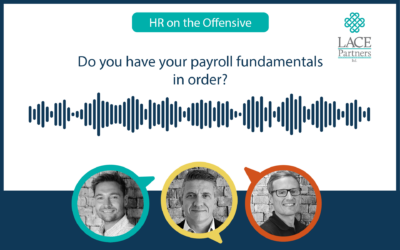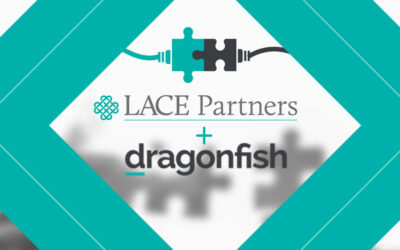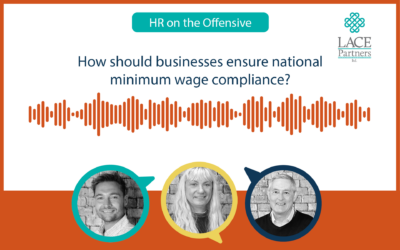 In this week’s blog, we will unpack some of the core challenges HR teams face with their HR operating models. It forms a critical part of our ‘Demystifying the HR op model’ campaign. Read on to help identify common challenges and root causes faced by HR leaders.
In this week’s blog, we will unpack some of the core challenges HR teams face with their HR operating models. It forms a critical part of our ‘Demystifying the HR op model’ campaign. Read on to help identify common challenges and root causes faced by HR leaders.
We recognise that achieving the optimal operating model for HR that aligns with your business needs can be complex and is not always straightforward – it demands a nuanced, tailored approach, and there is often no one-size-fits-all solution.
Given its complexity, it can be like trying to fit the wrong pieces in a jigsaw – while you might be able to put the pieces together, the overall picture will be wrong. If your operating model isn’t working for you or your business, you are likely to be experiencing a range of challenges. We have highlighted some of the most common below.
1. Failing to align with business requirements
The most noticeable indicator of an ineffective HR operating model is its misalignment with the business. This can stem from an HR operating model evolving organically over time with changes along the way to address specific issues, which may distract or distance the function from its focus on the business.
Alternatively, the operating model design process may have been driven primarily from an internal functional perspective to help HR teams work better together or to achieve an efficiency target, rather than from the perspective of HR can enable business stakeholders and make their lives at work easier. Either way, the resulting HR model may focus too heavily on functional requirements, resulting in HR and business stakeholders feeling disconnected.
Questions that help drive alignment with the business include:
- Does your HR strategy set out what the function needs to do to support the strategic goals of the business?
- Have you consulted with business stakeholders (leaders, managers, employees) to understand what they think of the HR service provision now and what their needs and expectations are?
- Are HR and business leaders regularly communicating and collaborating to ensure they feel HR is supporting the business transformation agenda?
- How much change are you rolling out from HR? Do business stakeholders feel the level of change is manageable and that HR initiatives and policies are aligned with the company culture and goals?
- Are you continuously seeking feedback from employees, managers, and other stakeholders to identify areas for improvement in HR practices?
- Do you have a service scorecard or success measures to monitor the value you are adding to the business?
These key questions can serve as a compass to see where the HR Operating Model might need to change and how it can be best aligned to business requirements.
2. Silos, silos, silos!
Feeling like you are working within a silo is a common pitfall in HR operating models. It can negatively impact HR’s efficiency and effectiveness, including how the function is perceived by the rest of the business. Silos are created (intentionally or unintentionally) where teams operate in isolation, not sharing information, collaborating, and/or focus on different goals or outcomes.
As an example, Centres of Expertise (COEs) are often criticised for working in silos. There is a perception in the rest of HR, and potentially the broader business, that they operate in an ‘ivory tower’, not understanding business priorities and developing solutions that may be exciting from ‘leading edge’ perspective but do not address the real issues.
Similarly, HR business partners (HRBPs) who are embedded in business units may be perceived as operating in a silo as they are only focused on meeting the needs of their business stakeholders, which may mean they design and deliver bespoke services and solutions that are not in line with the broader HR strategy.
Our clients often highlight the knock-on effects silos can have, including:

3. Insufficient capacity or capability
We all know the feeling: too busy dealing with today’s issues to even think about tomorrow, let alone the longer-term.
Dealing with operational HR-day-to-day administrative duties, urgent employee enquiries, ER or compliance cases – tends to consume a substantial portion of HR’s bandwidth. The outcome? HR doesn’t have the time to engage in longer-term strategic planning or delivering new ways of working which are critical for the organisation’s growth, adaptability and the evolution of the employee experience.
The reality is, HR needs to have sufficient capabilities and capacity to address both areas of focus. An HR operating model that doesn’t enable the dual focus on both short-term operational service provision and longer-term strategic partnering can limit the value the HR function can add. It can:
- Hinder the ability of HR to focus on workforce planning and delivering the skills the business needs in the future to remain competitive
- Limit the organisation’s ability to adapt quickly to changing business priorities
- Reduce innovation, with less opportunity to explore new technologies and ways of working
- Mean you are flying blind when it comes to critical decision making as you may be missing out on valuable insights.
4. Achieving the right return on technology investment
Despite an abundance of technology and tools in the market that promise to boost efficiency and enhance the employee experience, many HR functions have struggled to fully integrate these technologies and do not feel they are achieving the value case that was set out to secure the investment. There can be many reasons for this including:
- A lack of change management and adoption effort to ensure the end users understand how it will make life their lives at work easier and why it’s so important that they make full use of the new tools
- Insufficient ongoing investment to embed the technology and continuously improve
- A lack of digital capability within the HR function to make the most of the functionality
- Poor user experience because of a lack of integration.
Having the right people technology and tools can significantly boost efficiency and engagement, especially in today’s hybrid work environment. It’s essential to make sure that your HR technology meets the collaborative needs / wants of the business. If you’re interested in learning more about buyer’s remorse in HR tech, and how to overcome it, you can do so here.
5. Poor employee experience
Complex, inefficient processes only lead to one thing: frustration among employees and managers who feel HR makes their lives more difficult rather than easier, and within HR teams who feel they are not delivering the service that is required. When HR processes are not designed holistically with the employee experience in mind, employees may feel disengaged, undervalued and dissatisfied with their work environment.
HR processes may have evolved over time, triggered by changes in roles and responsibilities or new technologies. As a result, there may not have been an end-to-end consideration of the overall experience from the perspectives of key persona, including employees, line managers and leaders. Process steps and decision gates are often added but rarely removed. Common challenges relating to the employee experience and underlying processes include:
- End users not knowing who to go to for what
- Unnecessary approval steps
- Working around the processes, leading to poor compliance and risk control
- Frustration with HR and a perception of inefficiency.
Client story: what do HR operating challenges look like in real life?
Without context, challenges in areas like the HR operating model can seem abstract. In this short video people strategy expert and author Debbie Mitchell tells us a story of how some operating model challenges can play out in practice.
The HR operating model imperative
We said at the beginning that, if your operating model isn’t working for you or your business, you are likely to be experiencing a range of challenges. Do the challenges we have highlighted resonate with you? How confident are you that you have achieved the optimal HR operating model for your business?
If you’d like support determining the right HR operating model for you, reach out via the form below and we are happy to help.






